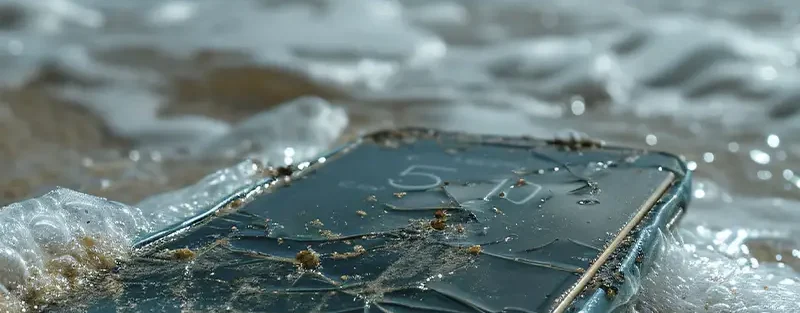Introduction
Water damage is one of the most common—and costly—problems that smartphone users face. Whether it’s a sudden drop into a puddle, a spill in the kitchen, or accidental exposure to rain, even a few drops of water can wreak havoc on your device’s delicate internal components.
While many modern phones come with some level of water resistance, no device is completely waterproof. This means prevention and quick action are key to protecting your investment and avoiding expensive repairs or replacements.
In this comprehensive guide, we’ll share practical tips on how to prevent water damage, what to do if your phone gets wet, and when to seek professional help from Cellular Fix.
1. Understanding Water Resistance vs. Waterproof
Many smartphones today come with an IP rating (Ingress Protection), which indicates how well the device can resist dust and water. For example, IP67 or IP68 ratings mean the phone can withstand immersion in water up to a certain depth for a limited time.
Key Points:
- Water Resistant means the phone can handle splashes, rain, or brief submersion but isn’t invincible.
- Waterproof would mean complete protection under water indefinitely—but no mainstream phones are fully waterproof.
- Water resistance can degrade over time due to wear and tear, drops, or repairs.
- Even with water resistance, it’s best to treat your phone carefully around liquids.
2. Best Practices to Prevent Water Damage
Use a Waterproof Case or Pouch
Especially when going near water—like at the beach, pool, or boating—a waterproof case or pouch offers the best protection. These accessories seal your phone completely, allowing you to use it safely in wet environments.
Avoid Using Your Phone with Wet Hands
Moisture on your hands can easily seep into ports or buttons, so always dry your hands before handling your phone.
Keep Your Phone Away from Water Sources
Avoid placing your phone near sinks, bathtubs, or cups of liquid. Small spills or splashes happen easily and can cause damage over time.
Use Wireless Charging When Possible
Wireless charging reduces the need to plug in cables, minimizing wear on charging ports that could let water enter.
3. What to Do Immediately If Your Phone Gets Wet
1. Turn It Off Immediately
Powering off your phone cuts electricity flow and reduces the risk of short circuits inside the device.
2. Remove Any Case, SIM Card, and Memory Card
This allows the phone to dry faster and prevents damage to those components.
3. Dry the Exterior Gently
Use a soft, absorbent cloth to wipe off water. Avoid shaking the phone, which might push water deeper inside.
4. Avoid Using Rice or Other DIY Methods
While popular, placing your phone in rice does not effectively remove moisture and can introduce dust or starch particles that cause further harm.
5. Use Silica Gel Packs or Specialized Drying Kits
These are designed to absorb moisture safely and are more effective than household remedies.
4. How Cellular Fix Can Help with Water Damage
Water damage is tricky because it may not show symptoms immediately—corrosion can develop over days or weeks. At Cellular Fix, we offer:
- Professional Diagnostics: Using advanced tools, we detect moisture inside the phone and assess the extent of damage.
- Cleaning & Repair Services: We carefully clean internal components and replace damaged parts such as batteries, speakers, or charging ports.
- Data Recovery: If your phone isn’t working, we can often recover important data before repairs.
- Preventive Advice: Guidance on how to avoid future water damage and maintain your device.
5. Signs Your Phone May Have Water Damage
- Screen flickering or unresponsive touchscreen.
- Distorted or muffled sound from speakers or microphone.
- Battery draining faster than usual.
- Charging problems or inability to charge.
- Unexpected shutdowns or restarts.
- Visible moisture under the screen or camera lens.
If you notice any of these signs after water exposure, it’s important to get your phone checked immediately.
6. Preventive Maintenance Tips
- Regularly check the condition of any waterproof seals or cases.
- Keep charging ports clean and dry.
- Avoid using the phone in extremely humid environments.
- Consider applying a screen protector with water-repellent coating.
7. When to Replace Your Phone After Water Damage
Sometimes water damage is so severe that repair costs outweigh the value of the device. At Cellular Fix, we help you evaluate:
- Repair cost vs. replacement cost.
- Device age and software compatibility.
- Data backup and recovery options.
Our experts will recommend the best course of action based on your situation.
Conclusion
Water damage can be devastating, but with careful prevention and quick action, you can protect your phone from serious harm. Always remember that even water-resistant phones have limits, and no DIY method beats professional diagnosis and repair.
At Cellular Fix, we’re here to support you through every step—whether it’s emergency water damage repair or advice on protecting your device. Keep your phone safe, and stay connected without interruption!



